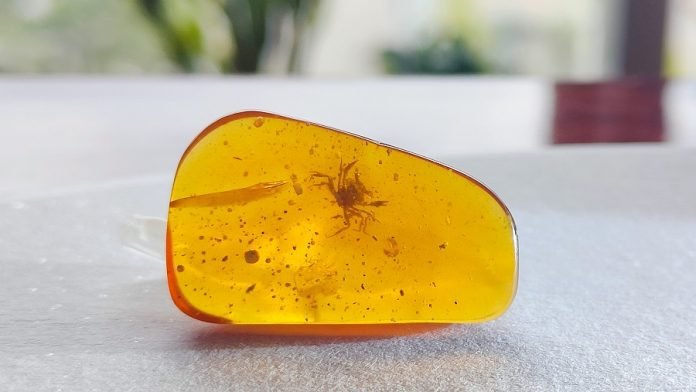
A young crustacean locked in amber 100 million years ago is filling a crucial gap in the puzzle of crab evolution, according to a University of Alberta PhD graduate whose work adds to growing evidence that the crab form is an evolutionary darling.
Up until now there has been a discrepancy between when non-marine crabs that live on land and in fresh water split from their marine relatives.
The known fossil record, which is made up of bits of shell, has the split between 75 and 50 million years, while the molecular record, which is built by comparing similarities and differences in DNA and RNA, predicts that non-marine crabs conquered land much earlier, more than 125 million years ago.
That started to change in 2015 when researchers came across a piece of amber jewelry in a market in Tengchong, China, that had a two-millimeter-long crab embedded in it.
“This spectacular crab looks modern, like something you might find on the B.C. coast flipping rocks, but it is actually quite old and different from anything seen before, fossil or alive,” said Javier Luque, a research associate at Harvard University and former post-doctoral researcher at Yale University who began looking at the encased crab as a PhD student at the U of A.
Luque guesses that this new branch in the crab tree of life — named Cretapsara athanata, “the immortal Cretaceous spirit of the clouds and waters” — was trapped in brackish or freshwater near a coastal environment in the middle of the Cretaceous period 100 million years ago.
This crab not only represents the oldest non-marine crab ever described, but it is also the most complete fossil crab ever discovered.
He noted it is believed the distinctive telltale long and slender legs, the roundish shape of their shells, and the reduced tail tucked under the body typical of most crabs have emerged independently at least five times since the start of the Jurassic period 200 million years ago.
“It seems like evolution loves making crabs,” he said. “Crabs are doing something well, so nature is sorting them out and selecting for those forms over the less crabby relatives.”
Written by Michael Brown.



